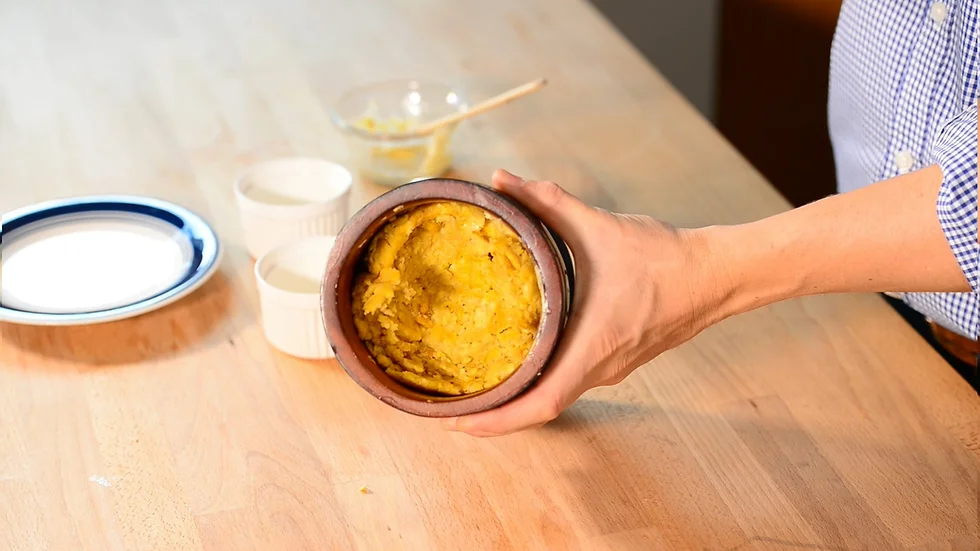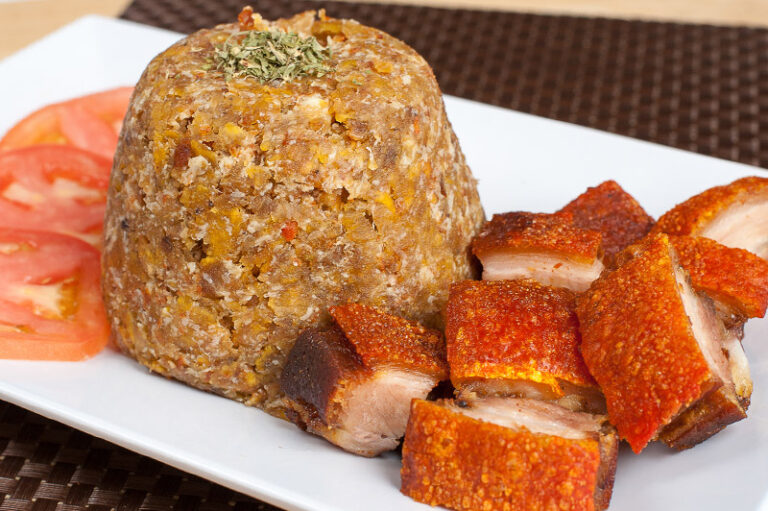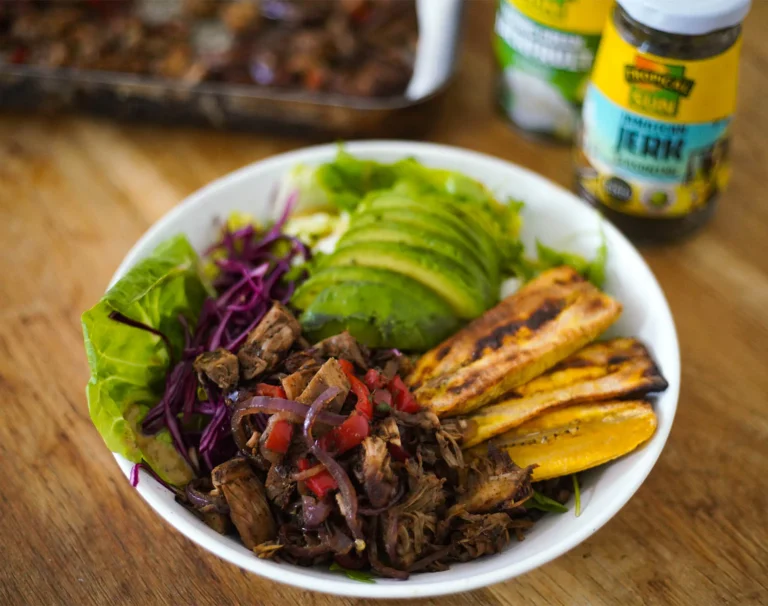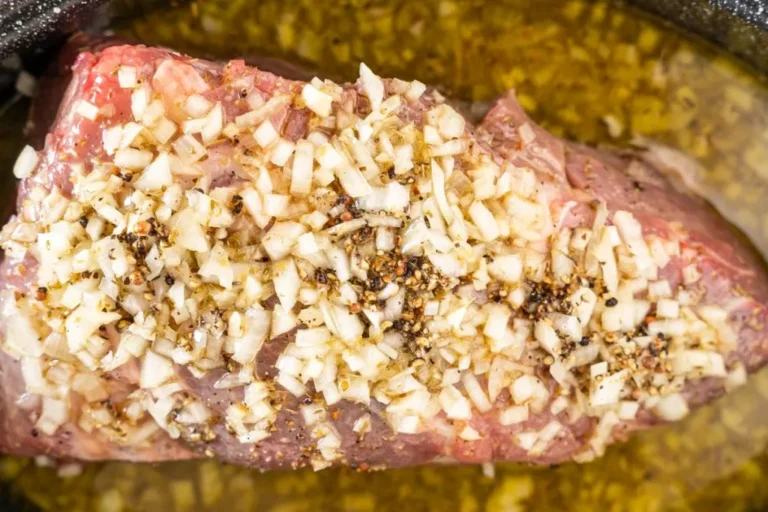Mofongo, the beloved dish with its roots deeply embedded in the culinary traditions of Puerto Rico, stands as a testament to the island’s rich gastronomic heritage. This hearty meal, crafted from mashed plantains, garlic, and pork cracklings, is a staple that brings comfort and flavor to the table. But what happens when you have leftovers? Reheating fried mofongo can be a delicate task, as the goal is to retain its original taste and texture.
In this guide, we’ll walk you through the most effective methods to warm up your mofongo, transforming it from a refrigerated state back to its mouthwatering glory. Whether you’re a seasoned cook or new to the kitchen, these straightforward steps will ensure that your mofongo remains a highlight, even on the second serving. So, let’s dive into the techniques that will help you reheat this classic dish without losing an ounce of its soulful essence.
The Heart of Mofongo Recipe
Mofongo’s allure lies in its simplicity and the depth of flavor it brings to every bite. This dish, a cornerstone of Puerto Rican cuisine, is a harmonious blend of fried green plantains, garlic, and chicharrones (pork cracklings), often served with a side of chicken broth or topped with meat. The plantains are fried, mashed with the other ingredients, and typically shaped into a dome or bowl, ready to cradle a variety of savory toppings.
A Rich History
The origins of mofongo trace back to the African influence on Puerto Rican culture, particularly the culinary technique of mashing starchy foods. It’s a direct descendant of the African dish ‘fufu,’ which is made by mashing yams, plantains, or cassava. Over time, Puerto Ricans added their twist to the dish, incorporating local ingredients and flavors, resulting in the mofongo we know and love today. Additionally, Dominican mofongo, which traditionally involves roasting plantains under hot ashes rather than frying them, highlights the cultural variations and shared culinary influences between Dominican and Puerto Rican cuisines.
Core Components
The key to authentic mofongo lies in its core components:
To prepare the plantain slices, you can fry, bake, or air fry them until they achieve a golden brown color and the desired texture.
Green Plantains
The backbone of the dish, providing structure and a subtle sweetness, comes from the cooked plantains.
Garlic
Crushed or minced, garlic adds a pungent kick that is essential to the dish’s flavor profile.
Pork Cracklings
Chicharrones, or pork rinds, offer a salty crunch, giving mofongo its distinctive texture.
Olive Oil
Used sparingly, it helps bind the ingredients while adding a hint of richness.
For the best texture when mashing fried plantains, garlic, and pork cracklings, it is recommended to use a mortar and pestle.
Broth
Chicken or vegetable broth is sometimes used to moisten the mixture, ensuring it doesn’t dry out.
Each element plays a crucial role in creating the final product, a testament to the dish’s cultural tapestry. When it comes to reheating mofongo, the challenge is to revive these flavors and textures without compromising the dish’s integrity.
The Importance of Leftover Mofongo
Leftover mofongo is a common occurrence in many Puerto Rican households, and knowing how to handle it properly can make all the difference. While mofongo is undoubtedly best enjoyed fresh, it can still be a delight when reheated correctly. Store your leftover mofongo in an airtight container in the refrigerator, where it will keep for up to 2-3 days. When it’s time to reheat, adding a splash of water or broth can work wonders in preventing the plantains from becoming dry and crumbly.
Reheating leftover mofongo can also be an opportunity to get creative in the kitchen. Consider adding it to a flavorful sauce or broth, allowing the rich flavors to meld together beautifully. Additionally, leftover mofongo can be transformed into entirely new dishes, such as mofongo cakes or mofongo croquettes, giving you a fresh take on this beloved Puerto Rican dish.
Storing Mofongo Right
Proper storage is the first step to ensuring that your mofongo retains its delightful taste and texture when reheated. The goal is to maintain the freshness and prevent the ingredients from becoming stale or soggy. Here’s how you can store your mofongo effectively:
Cooling Down Before storing, allow your mofongo to cool down to room temperature. Storing it while still hot can cause condensation, leading to a mushy texture upon reheating.
Airtight Containers Transfer the mofongo into an airtight container. This will keep out moisture and other contaminants that could affect its flavor and consistency.
Refrigeration: Place the sealed container in the refrigerator if you plan to reheat it within a few days. For longer storage, freezing is an option, but be aware that it may slightly alter the texture.
Portioning If you have a large amount of mofongo, consider dividing it into portions. This way, you only reheat what you’ll eat, preserving the rest for later.
By following these storage tips, you’ll set yourself up for success when it comes time to reheat your mofongo. Unlike dishes made with boiled plantains, such as mangú, mofongo’s fried plantains require careful storage to maintain their texture.
Reheating mofongo is more than just warming up a meal; it’s about reviving its soul. The key is to restore the dish’s warmth without compromising its signature texture and flavors. Here are the best methods to reheat mofongo, ensuring it remains as delectable as when it was freshly made.
Reheating Techniques to Reheat Leftover Mofongo
Oven-Baked Perfection The oven is ideal for reheating mofongo as it provides even heat distribution, which is crucial for maintaining its integrity. Here’s how to achieve oven-baked perfection:
Preheat your oven to 350°F (175°C).
Place the mofongo in an oven-safe dish and cover it with aluminum foil to retain moisture.
Heat for 10-15 minutes or until it’s thoroughly warmed through.
If you prefer a crispy top, remove the foil in the last few minutes of heating.
This method ensures that the mofongo heats evenly and retains its moist interior and crisp exterior. If you don’t have a pilón or mortar and pestle, you can use a mixing bowl and a potato masher to prepare your mofongo.
Skillet Savvy For those who enjoy a bit more texture, reheating mofongo in a skillet can provide that desirable crispy edge. Follow these steps for skillet success:
Warm a non-stick skillet over medium heat with a small amount of oil or butter.
Add the mofongo and spread it evenly in the pan.
Let it cook undisturbed for a few minutes until the bottom forms a golden crust.
Gently flip it over and heat the other side to achieve the same crispiness.
This stovetop method is quick and adds an extra dimension of texture to the mofongo.
Microwave Magic When time is of the essence, the microwave can be your best friend. Although not ideal for texture, it’s the fastest way to reheat mofongo:
Place the mofongo in a microwave-safe dish.
Sprinkle a few drops of water over it to add moisture.
Cover the dish with a microwave-safe lid or plastic wrap, leaving a small vent for steam to escape.
Heat in 30-second intervals, stirring in between to ensure even reheating.
While the microwave won’t provide a crispy texture, it will quickly warm your mofongo, making it soft and palatable. Each of these methods has its merits, and the choice depends on your preference for texture and the time you have available. By following these techniques, you can enjoy your mofongo with the confidence that it will taste as good as it did when first served.
Mofongo and Food Safety
Food safety is paramount when it comes to handling and storing mofongo. Start by washing your hands thoroughly before and after handling the ingredients to prevent any contamination. Ensure that the plantains are cooked to the correct temperature, and be mindful of cross-contamination with other foods. When storing leftover mofongo, let it cool to room temperature before refrigerating it in an airtight container.
When you’re ready to reheat mofongo, make sure it reaches an internal temperature of at least 165°F (74°C) to avoid any risk of foodborne illness. Pay attention to the expiration dates of your ingredients, especially the pork cracklings, to ensure they are fresh and safe to consume. By following these food safety practices, you can enjoy your mofongo with peace of mind.
Mofongo in Puerto Rican Culture
Mofongo is more than just a dish; it’s a cherished part of Puerto Rican cuisine and culture. This iconic dish is deeply rooted in the island’s history and traditions, often gracing the tables at family gatherings, special occasions, and holidays. It symbolizes hospitality and warmth, served with a side of love and care that makes every bite special.
In Puerto Rico, mofongo is a staple in many restaurants, where it’s often served with a variety of delicious fillings, such as pork, chicken, or seafood. Its popularity has transcended borders, making it a beloved dish in many Caribbean and Latin American countries. Mofongo’s rich flavors and cultural significance continue to captivate food lovers around the world, solidifying its place as a cornerstone of Puerto Rican cuisine.
Common Reheating Pitfalls to Avoid
Reheating mofongo, like any other dish, comes with its own set of challenges. To ensure that your dish remains as enjoyable as when it was first served, it’s important to be aware of common mistakes and know how to avoid them. Here are some reheating pitfalls to steer clear of:
Overheating One of the most common mistakes is overheating mofongo, which can lead to a dry and unappetizing texture. To prevent this, always reheat only until the mofongo is warm enough to eat.
Uneven Heating Microwaves and ovens can sometimes heat food unevenly, resulting in hot spots. To avoid this, stir the mofongo halfway through reheating if using a microwave, or turn it over if you’re using an oven or skillet.
Adding Too Much Moisture While a little moisture can help prevent dryness, adding too much can make your mofongo soggy. Use a light hand when adding water or broth during the reheating process.
Skipping the Resting Time After reheating, it’s crucial to let mofongo rest for a minute or two. This allows the heat to distribute evenly, ensuring every bite is just right.
Using High Heat on the Stovetop Reheating mofongo on a stovetop requires a gentle touch. High heat can burn the exterior before the inside is warm. Opt for a medium-low heat and be patient for the best results.
By avoiding these common errors, you’ll be able to reheat your mofongo to perfection, preserving its delightful taste and texture for a satisfying meal every time. The importance of texture in mashed starchy vegetables like mofongo, fufu, and other traditional Caribbean dishes cannot be overstated, as it is crucial to their cultural significance and enjoyment.
Final Analysis
Mofongo is not just a dish; it’s a celebration of culture and flavor that deserves to be enjoyed to the fullest, even when reheated. We’ve explored various techniques to ensure that your mofongo retains its essence and remains as enticing as when it was first prepared. Whether you choose the gentle warmth of the oven, the crisp touch of the skillet, or the swift convenience of the microwave, each method has the potential to restore your mofongo to its former glory.
Remember, the key to a successful reheat lies in understanding the delicate balance between temperature, texture, and time. By avoiding common pitfalls such as overheating or uneven heating and by storing your mofongo properly, you can relish its flavors time and time again. We hope this guide empowers you to approach reheating mofongo with confidence and finesse.
May your next meal be a testament to the enduring charm of this beloved dish, proving that some things truly do get better with time. Bon appétit! A well-prepared mofongo recipe, with its tasty blend of fried green plantains mashed with garlic and pork cracklings, highlights the dish’s appeal and popularity in Caribbean cuisine.








One Comment
Comments are closed.